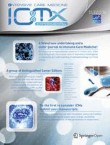Dynamic single-slice CT estimates whole-lung dual-energy CT variables in pigs with and without experimental lung injury
Dynamic single-slice CT (dCT) is increasingly used to examine the intra-tidal, physiological variation in aeration and lung density in experimental lung injury. The ability of dCT to predict whole-lung values ...
